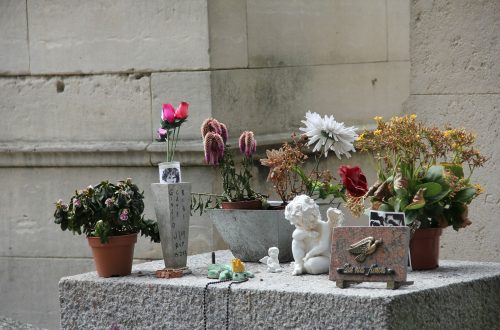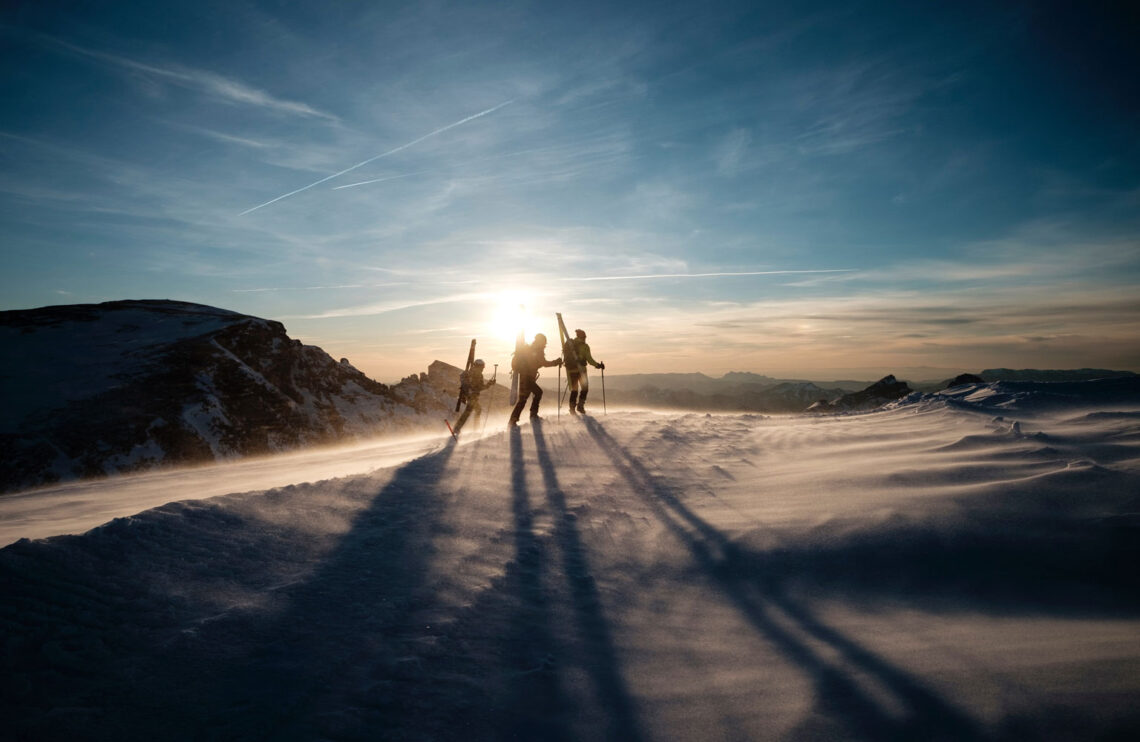
The Third Man Factor
The phenomenon known as “the third man factor” is truly remarkable. And its bizarre occurrence seems to parallel what my good friend Maxim W. Furek chronicled in his book Sheppton: The Myth, Miracle & Music. After I passed this along to him, he was inspired to dive deeper and write something that I think you will find just as fascinating. –Justin

Davey Fellin and The Third Man Factor
By Maxim W. Furek
Contributor to Normal Paranormal
In 1963, the entire world was gripped by the human drama unfolding in a remote Pennsylvania coal mine.
After being rescued from the Sheppton mine, Davey Fellin testified that Pope John XXIII was with him and Hank Throne during their two-week ordeal. But what the miners saw has been at the center of ongoing controversy. The Pope’s specter has been alternately described as both a miracle, as attested to by Vatican scholars, as well as a collective hallucination.
But could there be other theories to explain the Pope’s ghostly visitation, and, if so, what might those look like?
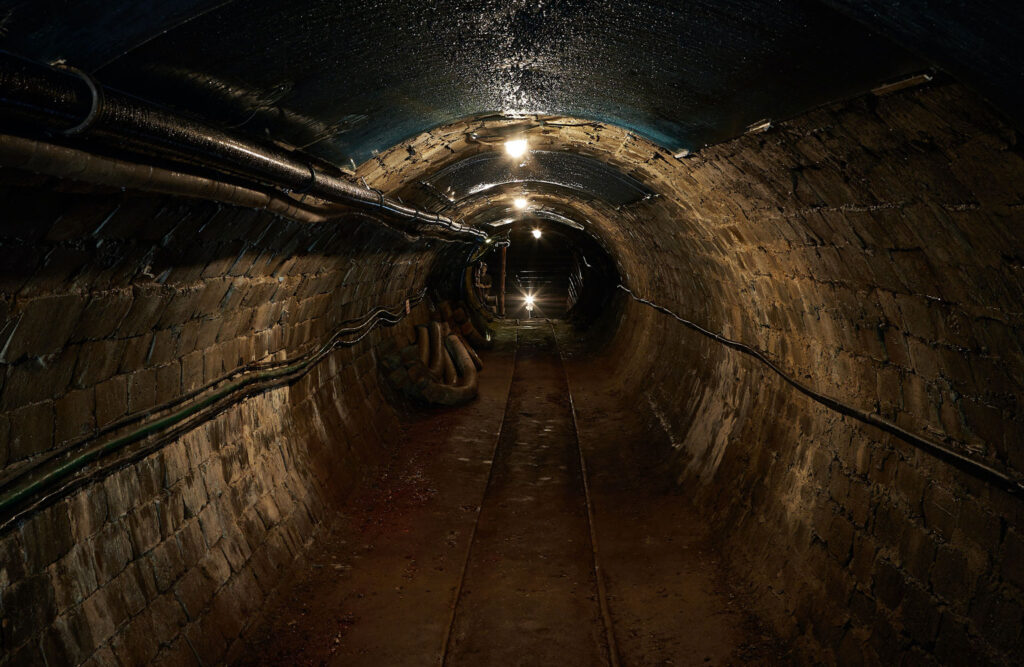
Martin Piechota regarded Sheppton as a “less known, religious event” parallel to the 1917 Miracle at Fatima. Piechota believed that mysterious Men in Black, emissaries who covertly contact human beings, visited Sheppton to offer the miners a sign of probable rescue. And too, paranormal editor Deena West Budd believed that the Pope’s imagery provided much-needed spiritual optimism:
As both parties (Fellin and Throne) were interviewed separately yet reported the same story, I tend to believe it was NOT a hallucination. I think these men were not meant to die at that time and were visited by the spirit of Pope John XXIII to bring them the hope and strength they needed to get through those two weeks of horror.
That hope and strength, granted to the trapped miners by the Pope, embodied the narrative known as The Third Man Factor. As described by researcher John Geiger, his book, The Third Man Factor: Surviving the Impossible, explored the human capacity to survive and transcend extreme physiological conditions like Sheppton, but with divine help.
Geiger’s Third Man Factor is a theory of how people, in many critical situations, or at the very edge of death often sense an unseen presence offering hope, protection, and guidance. These spirit guardians encourage individuals, under extreme circumstances, to make a final effort to survive. In his book, Geiger lists a number of such accounts, such as Ernest Shackleton.
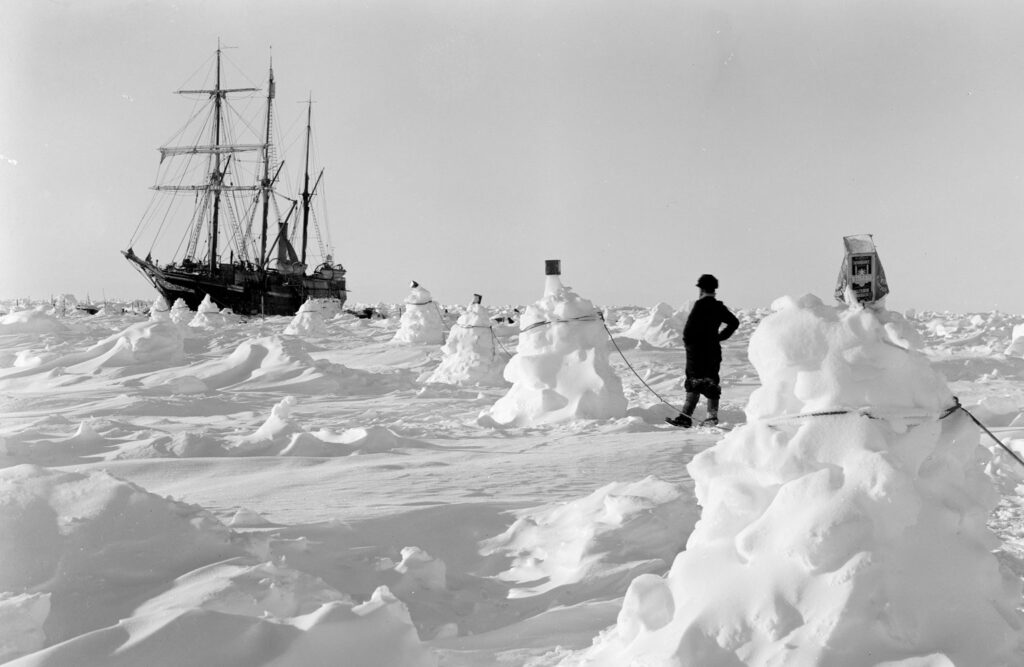
Shackleton
Explorer Sir Ernest Shackleton (1874-1922), C.V.O. (1874-1922) is regarded as the greatest of Antarctic explorers. He was a member of Captain Scott’s expedition to the South Pole (1901-1903, and in 1907 was knighted for his expedition on the whaler Nimrod. Shackleton sailed within ninety-seven miles of the South Pole, as chronicled in, The Heart of the Antarctic.
Shackleton led three British expeditions during the period known as the Heroic Age of Antarctic Exploration. He is considered one of England’s greatest heroes for his actions during the ill-fated Endurance expedition, leading his men to safety after being marooned for two years.
His book, South: The Endurance Expedition, was one of the first recorded instances of The Third Man Factor, John Geiger’s bizarre psychological phenomenon. In the book, Shackleton recounted this Third Man Factor (he called it the Fourth Presence), and described having “a sense of an unseen being who had joined them, the fourth presence”:
I know that during that long and racking march of thirty-six hours over the unnamed mountains and glaciers of South Georgia, it seemed to me often that we were four, not three. I said nothing to my companions on the point, but afterward, Worsley said to me, ‘Boss, I had a curious feeling on the march that there was another person with us.’ Crean confessed to the same idea.
Shackleton, Worsley, and Crean separately concluded that they were accompanied by an unknown fourth companion, a mysterious presence that appeared during their grueling journey.
But what was this mysterious presence? Shackleton admitted that, because of “the dearth of human words,” and the difficulty in describing “things intangible,” he felt obligated to include it in his book, South.
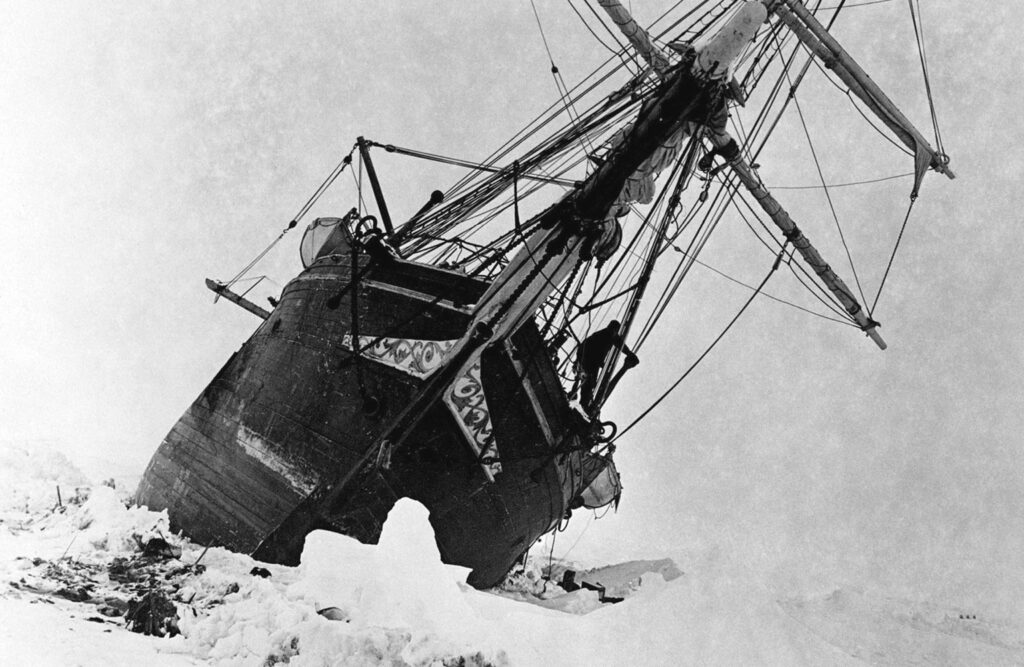
The Waste Land
According to paranormal researchers, The Third Man Factor has been experienced throughout history by numerous traumatized adventurers, including lone sailors, pilots, and explorers, sensing a guiding presence. Once it became public knowledge, Shackleton’s ordeal was articulated by poet T.S. Eliot (1888- 1965) in The Waste Land, considered the twentieth century’s most influential poetic work. In Part V, “What the Thunder Said,” Eliot addressed Shackleton’s unseen fourth companion, but changed the number to three:
Who is the third who always walks beside you?
When I count, there are only you and I together.
But when I look ahead up the white road.
There is always another one walking beside you.
Gliding wrapt in a brown mantle, hooded
I do not know whether a man or a woman.
—But who is that on the other side of you?
Since then, Eliot’s poetic license has taken root and the phenomenon is now known among climbers and other explorers as the “third man factor” or sometimes “third man syndrome.”

Guardian Angels
The Third Man factor asserts that spirit guardians appear during times of physical and psychological stress. Like Sheppton’s Pope John XXIII and Shackelton’s unknown fourth companion, spirit guardians provide comfort and support, and a deeper affirmation of our religious beliefs. They give us hope to move forward as we use free will to determine our direction.
Spiritual guardians, or angels, have been called “protectors” and are discussed in the Bible throughout the Old and New Testaments. According to Biblical scholars, guardian angels are divine agents of God sent to protect and aid humans in times of need.
The most popular book of Jewish law, the Midrash Rabbah, revealed that God created a guardian angel for each person to help protect us from evil and sent special angels to guide us. They have been described as having wings or radiating with marvelous bright light, described as God’s beautiful and supportive “intercessors.” Prophecies foretold that the ultimate goal of an angel is for us to be with God one day:
The Angels are supernatural beings who stand in the presence of God and protect humans from the cosmic forces that threaten them. The Bible makes it clear that an individual’s guardian angel is always watching over them and that God desires for all His children to be blessed with the presence of a guardian angel.
Humans are interconnected through vibration, light, and Jung’s “collective unconsciousness.” We never travel alone. Our ancestors protect us along our journey in the form of mysterious apparitions. They watch as we navigate through inevitable human pain and suffering. Thucydides (c. 460-400 BC), Athenian historian and general, wisely observed:
The bravest are indeed those who have the clearest vision of what is before them, glory and danger alike, and yet notwithstanding, go out to meet it.
Glory and danger are permanently close at hand, as are spirit guardians who will not impede or interfere in our progress. They will not actively rescue us. No, as The Buddha said, “No one saves us but ourselves. No one can, and no one may. We must walk the path.”
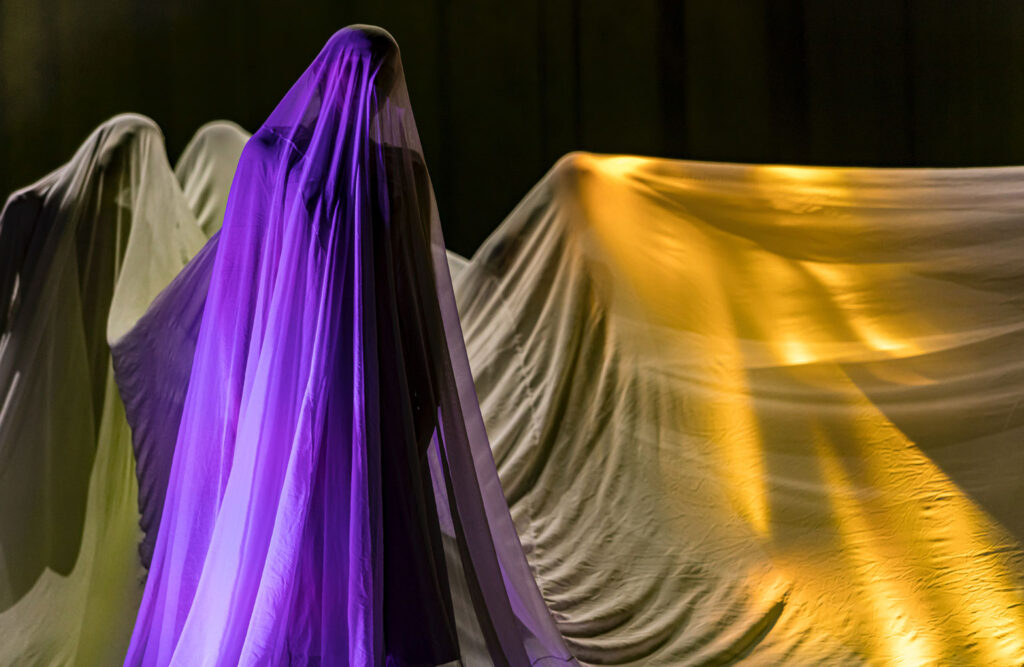
Charles Lindbergh
There has been lingering debate over the actual definition of this phenomenon. Ghosthunter Charles J. Adams III, who has written extensively about the Pennsylvania Coal Region, observed:
‘Guardian Angels’ stories in shafts and pits circulate any mining culture. While that is the moniker given to the apparitions by some miners, others simply cannot attribute their presence to anything necessarily ‘angelic’ and recall them only as ‘apparitions.’
Still, Adam’s apparitions, or spiritual guardians, can be easily transposed to realms miles high above his native coal mines.
Charles Lindbergh was the first to complete a solo flight across menacing Atlantic wind currents and between two major international cities. His 1927 Spirit of St. Lewis flight, from New York City to Paris, took thirty-three and a half hours. He believed that he was helped by spirit guardians.
During his transatlantic flight, there were no automatic pilot devices. Lindbergh’s most significant challenge was staying awake, and, at times, he flew ten feet above the ocean, to avoid the blinding fog. After 24 hours into the journey, he became delirious. As documented by History.com, Lindbergh experienced ghostlike apparitions that spoke to him:
He later wrote of mirage-like “fog islands” forming in the sea below and of seeing “vaguely outlined forms, transparent, moving, riding weightless with me in the plane.”
After the hallucinations faded, the exhausted aviator landed in Paris to a crowd of more than 150,000 jubilant spectators. He had been awake for sixty straight hours.
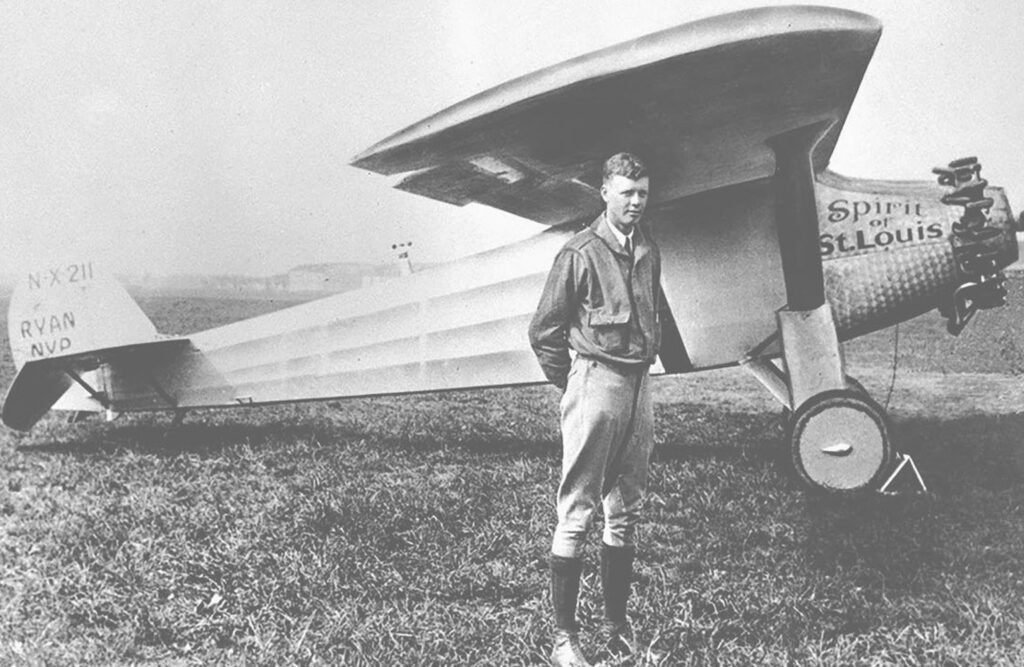
Lindbergh later revealed his other-worldly secret in the books, The Spirit of St. Louis (1953) and Autobiography of Values (1977). During his ordeal, he suffered from fatigue and an altered state of consciousness, pondering “the nearness of death” and “the longness of life.”
Lindbergh became aware of humanlike, ghostly phantoms that appeared in the fuselage behind him. Lindbergh, felt caught in some “unearthly age of time,” as he viewed these apparitions:
These phantoms speak with human voices—friendly, vaporlike shapes, without substance, able to vanish or appear at will, to pass in and out through the walls of the fuselage as though no walls were there. Now, many are crowded behind me. Now, only a few remain. First one and then another presses forward to my shoulder to speak above the engine’s noise, and then draws back among the group behind.
Lindbergh heard clear and familiar voices “conversing and advising on my flight, discussing problems of my navigation, reassuring me, giving me messages of importance unattainable in ordinary life.” He recalled that the voices gave him helpful advice and mystical wisdom that was “unattainable in ordinary life.”
Lindbergh associated these spirit guardians with the dead and pondered whether he had crossed the boundary between life and death and was in the land of the dead. He offered a description of the spirit beings, steeped in the fantastic and the paranormal:
The spirits have no rigid bodies, yet they remain human in outline form—emanations from the experience of ages, inhabitants of a universe closed to mortal men. I’m on the borderline of life and a greater realm beyond, as though caught in the field of gravitation between two planets, acted on by forces I can’t control, forces too weak to be measured by any means at my command, yet representing powers incomparably stronger than I’ve ever known.
All of these explorers — Fellin, Shackleton, and Lindburg — are believed to have experienced visitations from spiritual guardians. The Third Man Factor is more prevalent than previously documented, but what that phenomenon actually represents, remains a matter of conjecture and personal faith.
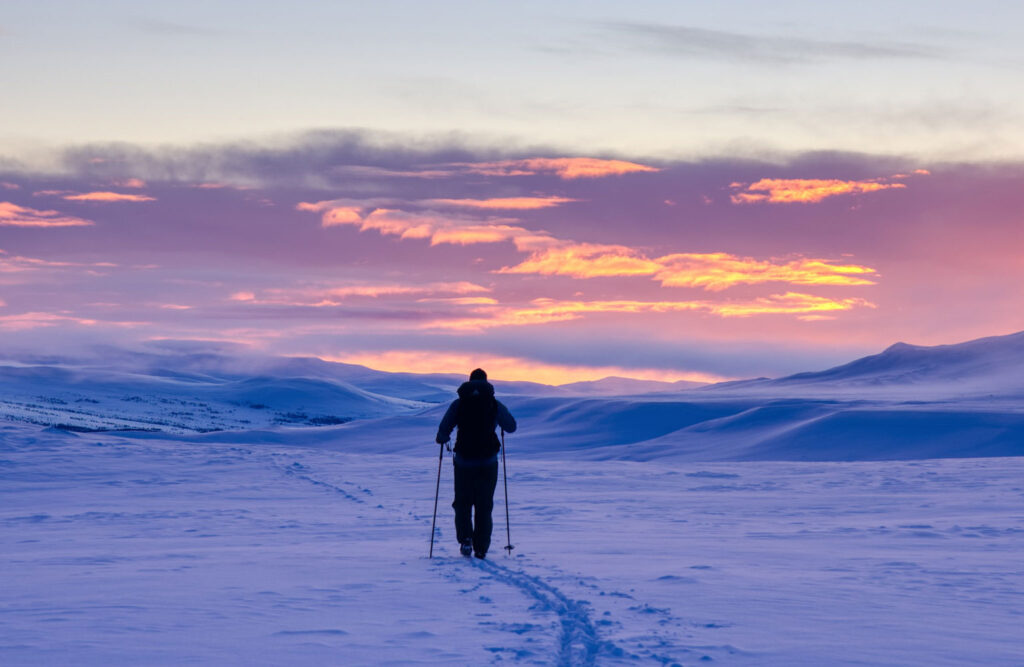
Maxim W. Furek is an avid student of the paranormal. His eclectic background includes aspects of psychology, addictions, mental health, and rock journalism. His most recent works include Somebody Else’s Dream: Dakota, the Buoys, & “Timothy” and Sheppton: The Myth, Miracle & Music.
Maxim has been interviewed on paranormal programs including Midnight in the Desert, Exploring the Bizarre, Darkness Radio, Darkness on the Edge of Town, Dark Sun Rising, and Para-X Radio.
For additional information, please contact him directly through his official website, Facebook or LinkedIn.
References:
- Adams, C.J. Coal Country Ghosts. Legends and Lore. Reading, PA: Exeter House Books. 2004.
- Andrews, E. (September 1, 2018). 10 Fascinating Facts About Charles Lindbergh. History.com. Retrieved from https://www.history.com/news/10-fascinating-facts-about-charles-lindbergh
- Bucher, M. (February 26, 2021). What Does the Bible Say about Guardian Angels? I Believe. Retrieved from https://www.ibelieve.com/faith/what-does-the-bible-say-about-guardian-angels.html
- Eliot, T.S. The Waste Land. New York: Boni & Liveright. 1922.
- Furek, M. Sheppton: The Myth, Miracle & Music. 2015.
- Flying With Angels: The Curious Story of Charles Lindbergh. (December 12, 2020). Anomalien.com. Retrieved from https://anomalien.com/charles-lindbergh-angels/
- Gaines, J. (July 29, 2012). Shackleton’s Third Man. The Glyptodon: Stories of Natural History. Retrieved from https://theglyptodon.wordpress.com/2012/07/29/shackletons-third-man/
- Geiger, J. The Third Man Factor: Surviving the Impossible. New York: Weinstein Books. 2009.
- Shackleton, E. South: The ENDURANCE Expedition. London: William Heinemann, 1919.
- What Does the Bible Say About Guardian Angels? (October 26, 2021). 21st Century Catholics. Retrieved from https://21stcenturycatholicevangelization.org/catholicism-101/what-does-the-bible-say-about-guardian-angels/


